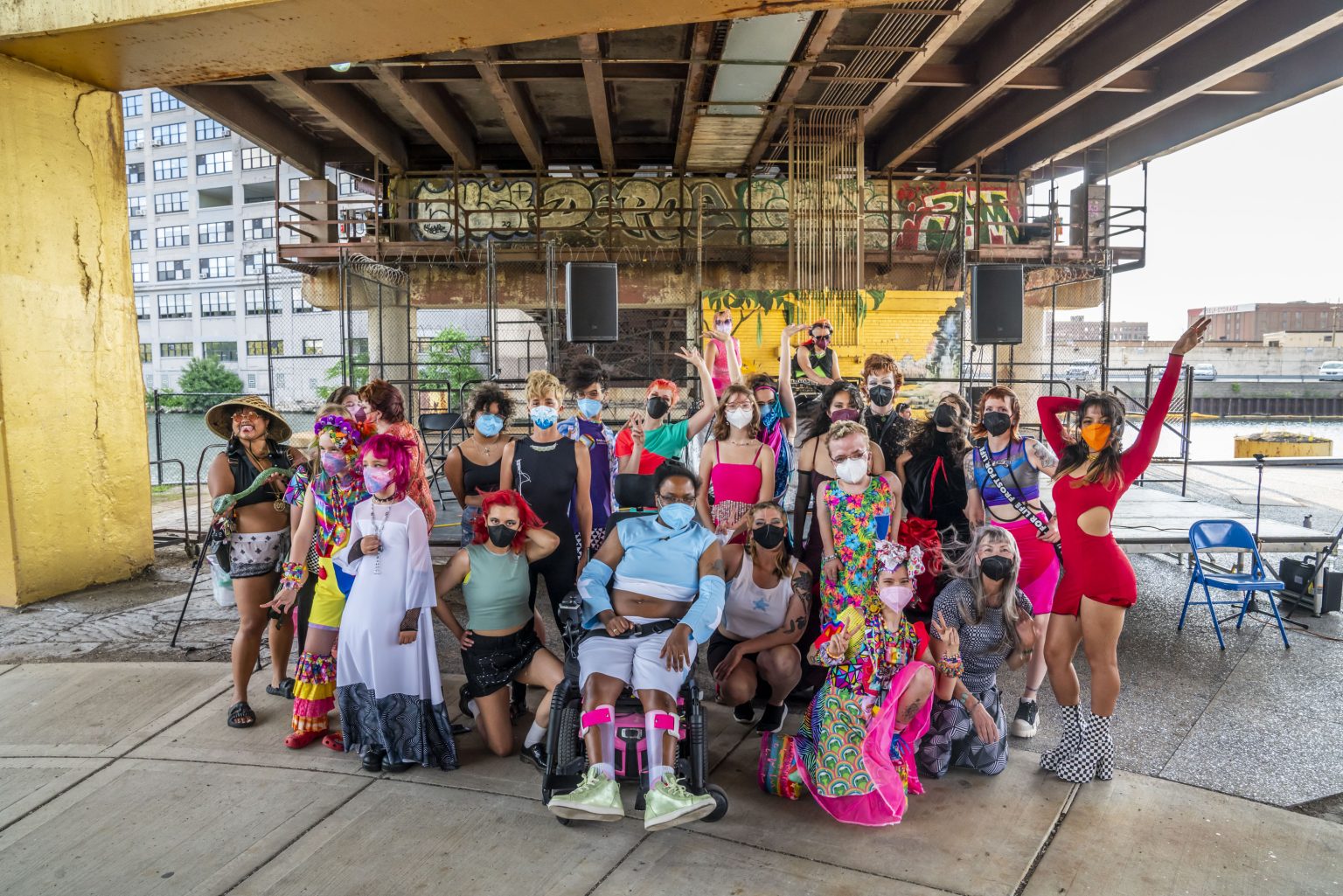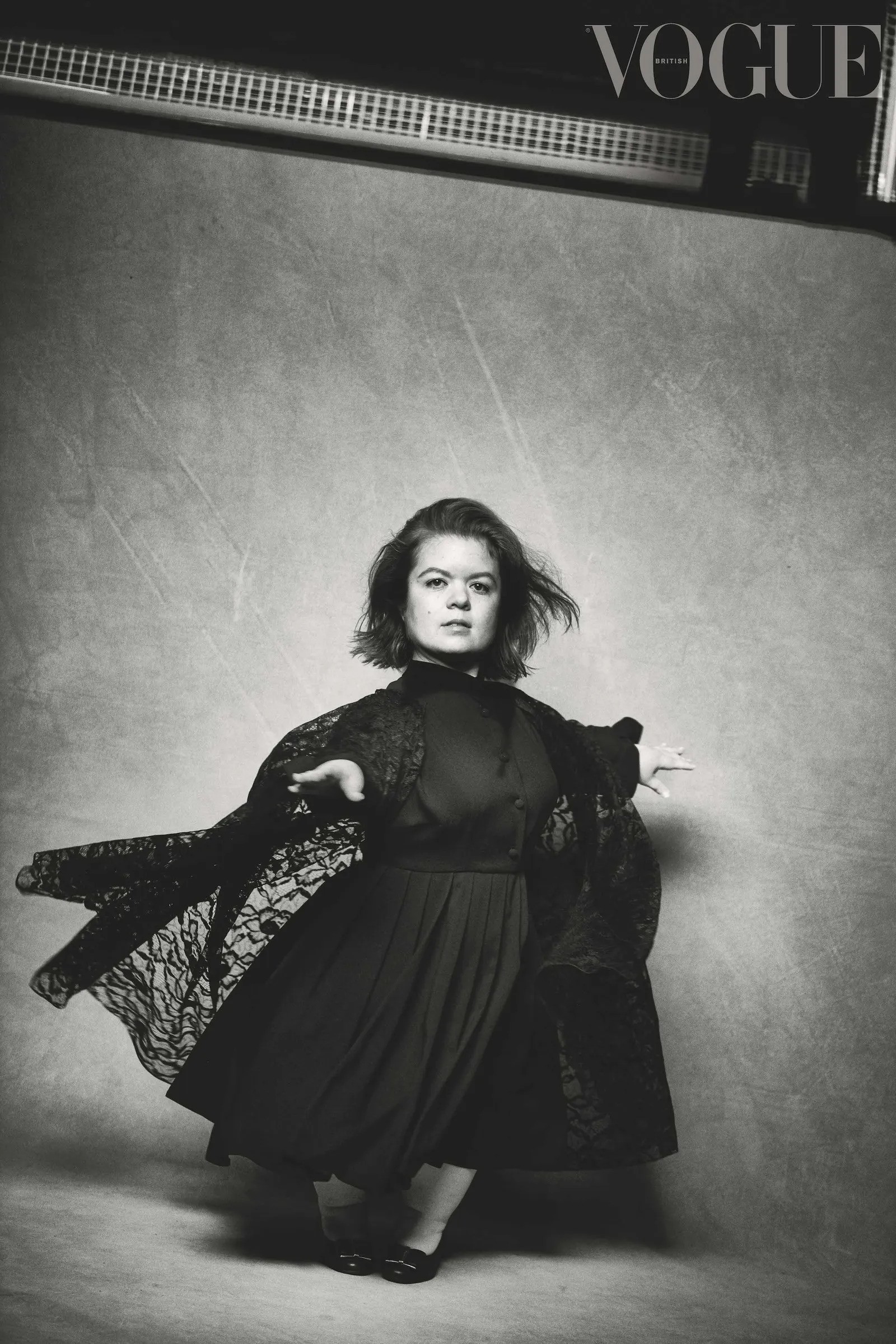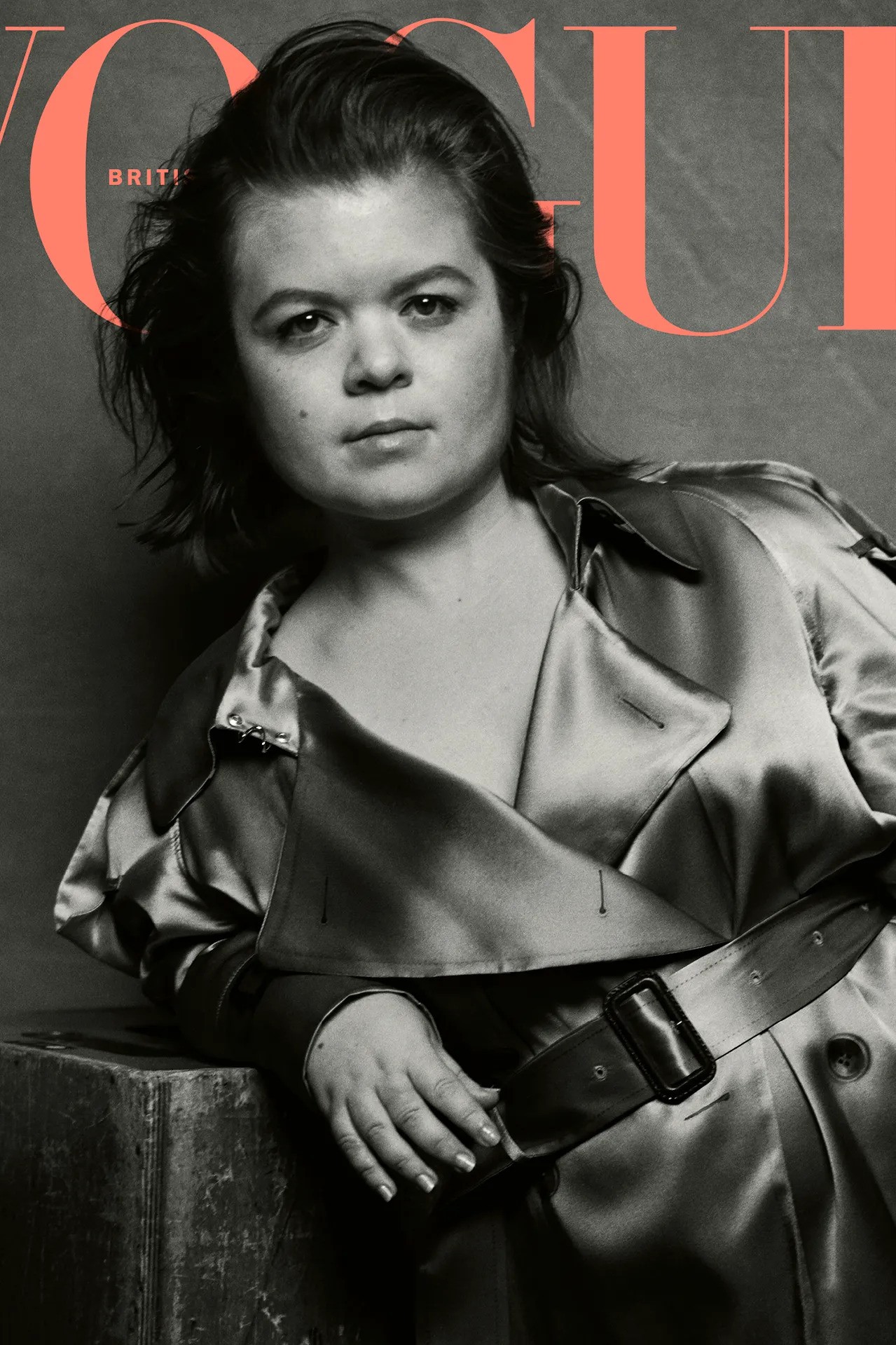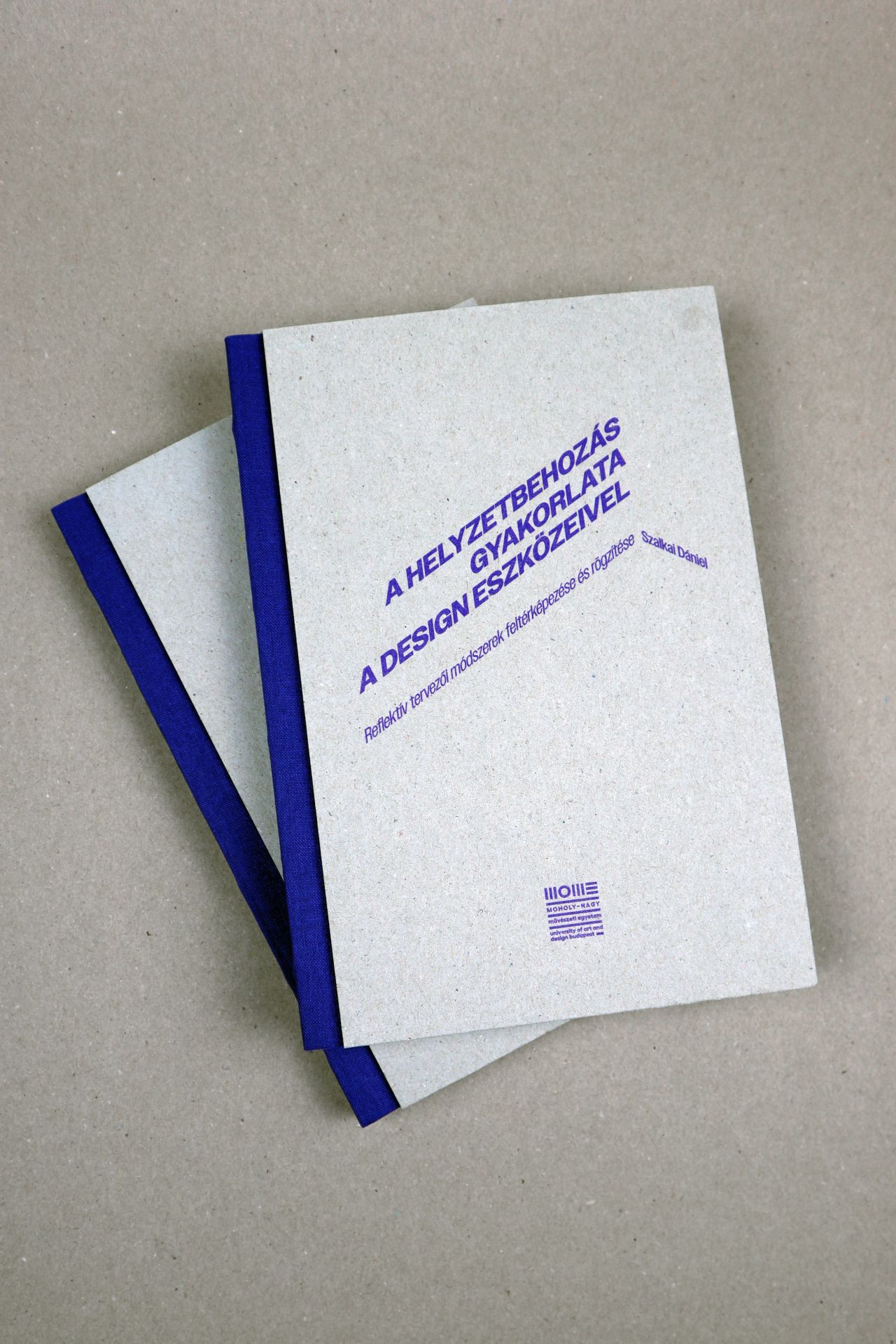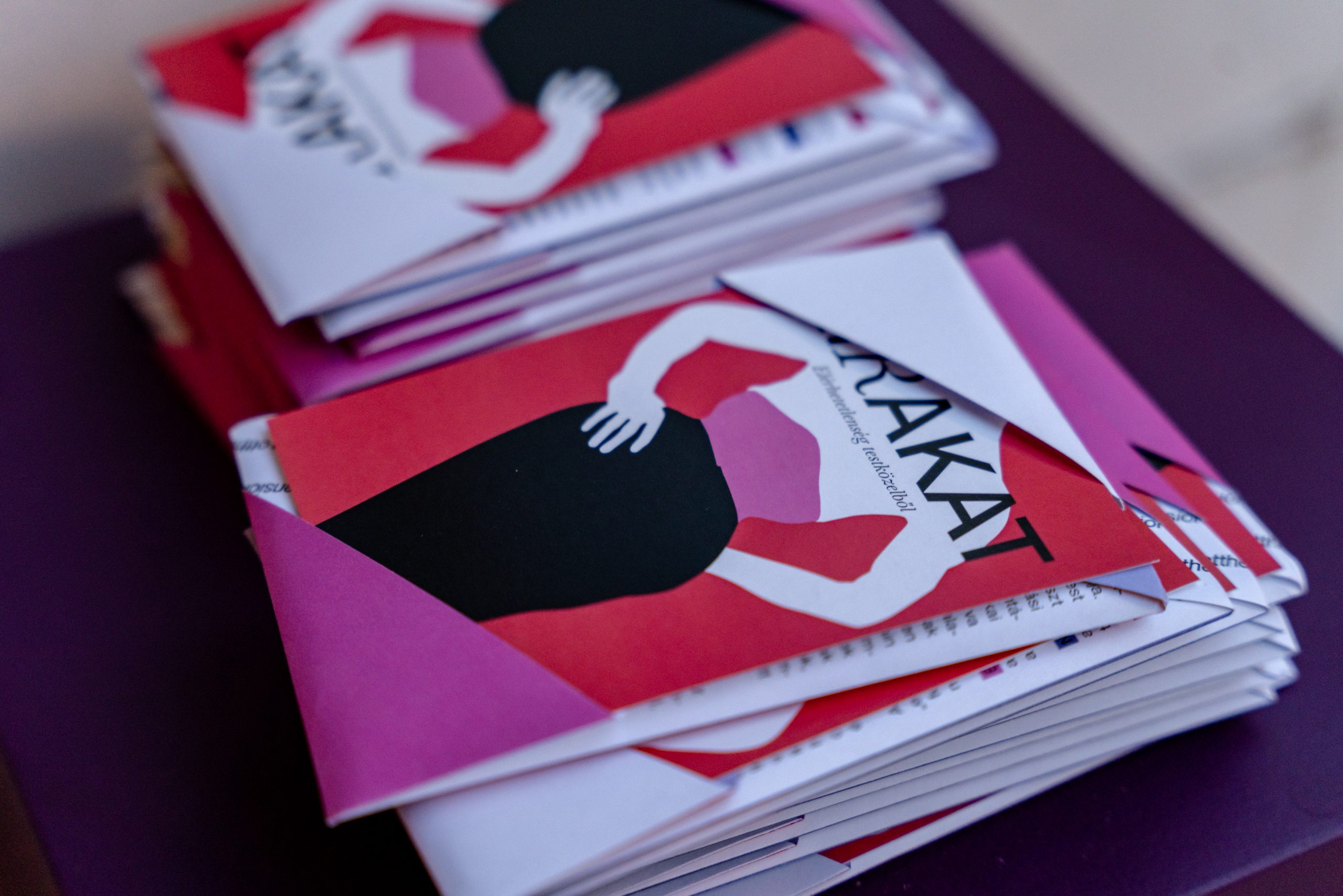
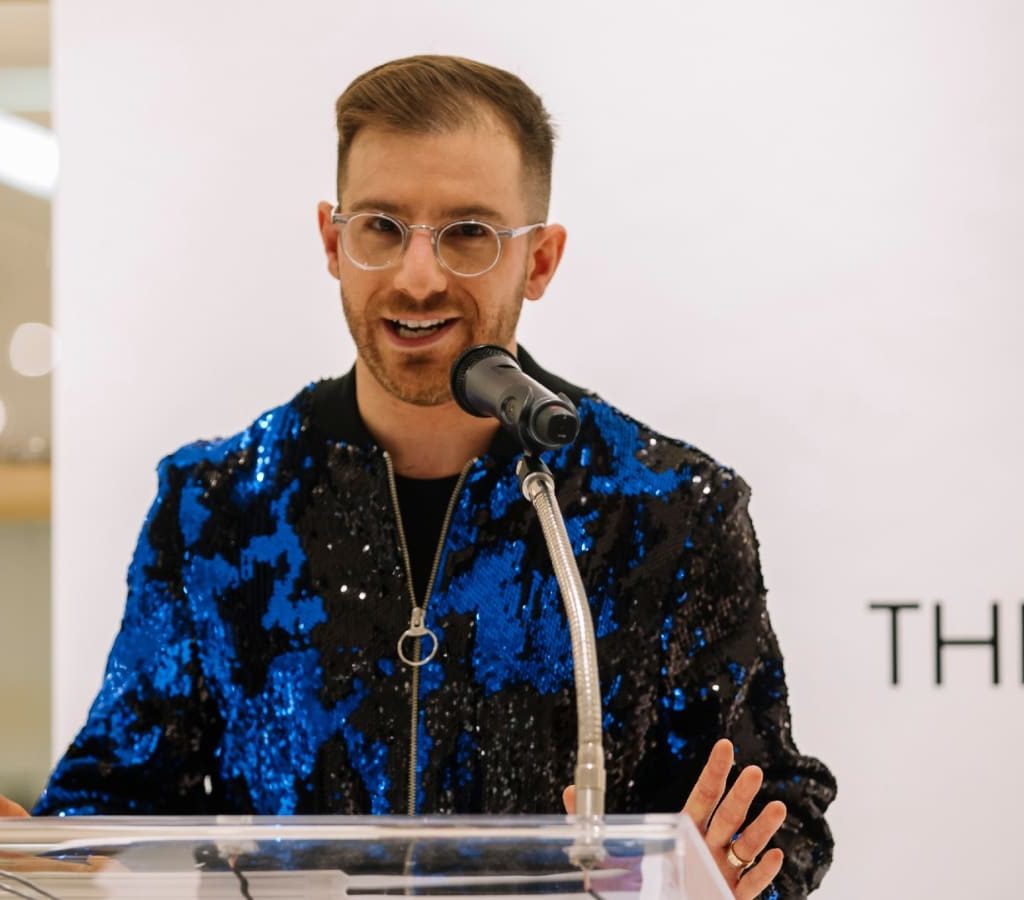
“Inclusive fashion education is a process rather than a final outcome” – Interview with Ben Barry
Recently, there has been a noticeable increase in fashion-related exhibitions and publications in Hungary. This rise raises an important question when exploring the relationship between the body and clothing: is there a body without clothes? [1] In today’s world of instagrammable fashion [2], I firmly believe there isn’t. Clothing is not just about fashion, it is also about the bodies that wear these clothes. Every body. During my university years, I had the opportunity to work with and converse with individuals connected to people with disabilities and the concept of accessibility. Many of them expressed that initiating discussions on this topic is incredibly challenging, especially in Hungary, let alone bringing design or fashion into the conversation. When doing the research for my Master’s thesis, I came across several questions that made me continuously re-evaluate my relationship with fashion and clothing. Do we really perceive clothes only visually? Isn’t it more of a multisensory experience? And what makes good clothing? These questions formed the basis of my conversation with the Dean of Fashion at Parsons School of Design, Ben Barry, whose insights and critiques are indispensable in today’s fashion research.
In my experience, if you are not disabled, don’t have experience with accessibility, or don’t have a family member who is disabled, it is hard to reach these people, and get to know their needs and problems. And because of that, I was wondering when and why did you decide that you wanted to do research on topics like inclusivity and inclusive fashion? What was ground zero for you?
There were probably two indicators. One was my own lived experience as someone with low vision. How I navigate the world – especially with fashion – is in ways challenge the visual primacy of fashion. And I think the second was when I was putting together courses on fashion theory, there was such a limited range of research on fashion and disability. Sometimes the perspectives that were taken were very functional or very medical. These saw disability as an individual problem, or something to be fixed, versus an opening for creativity, an opening around body variation. So, I wanted to do work that would expand the narrative around disability and fashion.
Was there a specific moment in your life when you felt sure that this topic was worth researching?
There wasn’t necessarily a specific moment, I think there were more. One of them was probably when I was putting together the aforementioned course syllabus, and it really made me think about what is included in fashion theory. It is concerned with for example inclusion, decolonisation and equity, but how do these look like in practice? I recognised that there was a limited range of work on disability and, as a researcher I felt I can help contribute to that. Everyone deserves clothing that makes them feel secure about their bodies and that helps expressing their identities.
Did you have any negative experiences during your research? Because I definitely got some… I wouldn’t say negative but sceptical comments when talking about my research. In Hungary, this topic is kind of new for most people, and they don’t really understand why disabled people need various garments instead of clinical, functional clothes.
I didn’t receive negative comments. I did encounter stereotypes and stigmatisation, such as ‘oh, poor disabled people don’t have nice clothing’. Helping them find clothing or new perspectives about their bodies (for instance that their bodies are not sick and neither are they – the editor) reinforces the charity model. I feel like people are guided mostly by pity or their desire to help solving the problem rather than realisation that this is a topic worthy of research.
I also had very similar experiences. Charity work is a very hot topic in our country as well when it comes to disability. It’s also very common that we only talk about this subject when specific occasions, like the Paralympics, occur. I’m guessing that for your research, you also did some interviews with people living on various spectrums. Was it easy for you to ask them questions or was there any kind of language barrier? In Hungarian, we have a lot of words that are very inappropriate, such as blind, cripple, lame, etc. Sometimes I struggle formulating questions, because those who I’m talking to wouldn’t want me to use words that are currently in use.
It certainly is required that before our research team would engage in interviews we self-reflexlect, read, and explore questions such as how do we understand the position we are in; how do we understand our own bodies; and what did we learn about disability. We should only ask questions, while seeking to remain as neutral as possible. The world is very ableist and as a disabled person you internalise this attitude to the point that even the questioning of the status-quo can feel emancipating. In our research, we look at disability as a benefit to fashion; as fashion’s chance to become more open.
No one has reframed disability in that way, because according to the dominant narrative it’s about loss – about something that has to be solved or fixed.
We’ve never asked any questions like when did you become disabled or were you born disabled. We really tried to make the questions as non-intrusive as possible, and select a language that was either neutral, or empowering. Like with any identity group, there are so many different languages to use and, as you’ve menationed, they often contradict. So we were looking for the language preferred by the participant. Some people use expressions like ‘disabled folks’, ‘people with disabilities’, or ‘crip’, but to some others these can feel really offensive. It was crucial to ensure that we use language that was determined by the participant, so that we weren’t imposing our own worldview or politics on them.
If I’m correct, you became the Dean of Fashion at Parsons School of Design not so long ago. What was your first plan or dream that you wanted to fulfil?
I applied for the position with very clear intentions. I wanted to ensure that we were grounding our curriculum in culture and social justice, so that it would be the guiding principle of everything we do. In the first year, I was working to create a new vision statement for the school that was grounded in access, inclusion, decolonisation, and equity. We hired professors who bring in knowledge in indigenous fashion and decolonisation, in plus size and fast fashion, in disability and fashion, and in trans and non-binary fashion, in order for them to help change the curriculum. We’ve also introduced new courses in fast fashion design for large bodies, in multisensory design, and in indigenous fashion. So we made changes, but it is a slow process, particularly in an institution and an industry that is so grounded in the logics of colonisation and European modernity.
The university is located in New York. Looking from this side of the world, that is a city full of open minded people. I am wondering how your colleagues truly responded to these new ideas.
I think you’re right, it’s a privilege being in New York, as it is a diverse city grounded in art, design, culture, and in inclusivity, and community. Of course, it’s not perfect, but I think my colleagues certainly were very supportive. There wasn’t any resistance, as if everyone wanted this change. Before I came, many of my colleagues had been doing this work already, just not in an institutionalised form, but within their classes and research practice. I think being in New York helped, but inequity, stigma and discrimination around fat and disabled bodies is still deeply rooted. There’s still a lack of knowledge around Native American fashion and history and the fact that indigenous artists and designers are the original and continuing creatives of fashion and material culture. There’s still a huge knowledge gap, so our work isn’t just offering courses, but making sure we’re on a journey together to unlearn a lot of what we’ve picked up in fashion school and in the world. This requires a deep humility and commitment specifically from professors to keep learning, to keep growing and to keep challenging themselves, but our community supports them. Without them, this whole thing wouldn’t be possible – it can’t be just my vision, I can’t be doing it alone, Parson’s whole community has to be on boat.
Overall, this sounds like a pretty positive reception to me.
They were open to change, but I also think people, including myself, don’t have all the knowledge. We make mistakes, and we don’t necessarily know where to begin these changes, right? They require re-education because many of us who went to fashion schools, especially in the Global North or worked in the industry, were taught practices and particular knowledge sets centered around privileged Western perspectives. These perspectives tell a story about fashion as generated through European modernity and industrialization. They adhere to binaries around gender, and privilege certain bodies based on race, size, and ability. Even the language we use when talking about plus-size or fat bodies’ right to clothing reflects these biases by stating that the clothes should be flattering. What does it mean for clothing to be ‘right’? Does it mean it needs to make you look thinner? It takes a lot of re-education to ensure that when we do this work, we’re not inflicting more harm, because that’s the only way to engage in inclusive fashion education. If you don’t do the work, you will just fall into stigma and stereotypes, which will inflict harm on students and communities. That’s why having plans around accountability is important. When harm occurs, we need to be able to say, ‘we didn’t know that, we’re sorry, this is how we’re going to address the issue and change’. We can’t expect anyone to be perfect or know everything, but we must ensure that there’s a system of accountability in place.
I think the shift towards more inclusive fashion education is certainly about deep humility and constant dialogue. Like decolonization, it’s a process rather than a final outcome.
You’ve mentioned the need for dialogue. Do you think that these new ideas and changes that you introduced made room for discussion about dilemmas regarding disability at your university?
Not yet, because right now, it’s not required for every student to learn about disability. It’s integrated in courses a bit, and there’s certainly elective courses where students can focus on this subject, but I think every design student needs to learn about this topic. If they graduate with a fashion design degree, they have to be able to design for a variety of bodies, including disabled bodies. That should be a requirement for getting an undergraduate and graduate degree in fashion design.
There’s no reason that you can only graduate with proficiency in white American or European fashion, while you don’t understand disabled and not-thin bodies.
The idea that the story of fashion is the result of industrialisation in Europe has to be uprooted, and deeply expanded, so that students leave university with much more layered, complex and rich understanding of fashion when they graduate. We’re close but we’re not there yet. Change has to be slow, because we want to be thoughtful. If we go too quickly, we can cause harm – we will only make a small renovation instead of rebuilding the entire house.
We also talk about these kinds of topics with my classmates. At MOME, we put a lot of emphasis on topics like green washing or what can we do to save as much fabrics as possible. I had a convo with fashion students some years ago, and they said that sometimes it’s frustrating for them to feel they have to meet all of these needs and challenges. Did you do any research among students on how they feel about these subjects?
I haven’t done any research on this, but I think it’s important to provide fashion education programmes where we talk about these issues. Fashion education addresses a multitude of complexities, from climate justice through body justice to our relationships and to the overhaul of the fashion industry. There may be some schools that only want to design pretty clothes, and don’t care about anything else. I think as educators it is part of our job to intorduce students to these questions. It’s important that this critique doesn’t mean that we don’t love fashion or find joy in it. This isn’t about fashion being bad, and about the fashion industry doing only harm. If that was the story, who would want to partake in it? Fashion is intrinsically beautiful and joyful – it affirms our bodies, it’s a creative expression, it connects us to our histories, to the environment, to other people. Real fashion embodies social, cultural, economic power. I want to center the joy that comes with it. I want to expand the right to the joy of fashion because right now not everyone has access to it. So the question is, how can you use your power and responsibility as an educator, as a designer, as a theorist, as a scholar, to help fix that gap and tension? I think the same goes for students. Through fashion criticism, students often question why they are even in this industry. Why are they even studying this? Did they go to fashion school to be sad and depressed, or because the creative self-expression in fashion brings them joy? I believe these two feelings complement each other, and it’s worthwhile for students to learn how to balance them.
Finally, I took a question from one of your colleagues, Sinéad Burke: will fashion ever be truly diverse? Do you see any change in the fashion industry as there is increased spotlight on inclusion?
I think that there’s more openness to conversation. The industry was reluctant to engage before but now there’s a recognition that this is an essential topic for the future of the industry. And so I’ve seen that people are definitely excited to work with us, to engage in coursework, in partnership, and draw upon the knowledge our scholars and students have on inclusion. I think fashion is diverse by default. Of course, when we define fashion through the industry, it doesn’t seem diverse but we need to understand that fashion is multiple and plural. Since time immemorial, communities have been practicing fashion. I think part of the work of inclusion is linking fashion born from European modernity and industrialisation to timeless fashion that has existed in communities around the world. Communities that have been excluded from the dominant industry have created parallel fashion systems to clothe their bodies and to express their identities. By using inclusive practices we can challenge the dominance of the capitalist, Global North-centered industry that has erased that diversity in fashion.
// /
Anna Vékony has graduated from the MOME Design and Art Management MA programme in 2024. She made the interview for her thesis titled All inclusive? Shortcomings, opportunities and ambition in contemporary fashion.
[1] Joanne Entwistle: The dressed body, 2015
[2] Keszeg Anna: Divat-újratervezés – A kortárs divat médiaműködései, 2022 (Redesigining Fashion. Media Operations of Contemporary Fashion)
